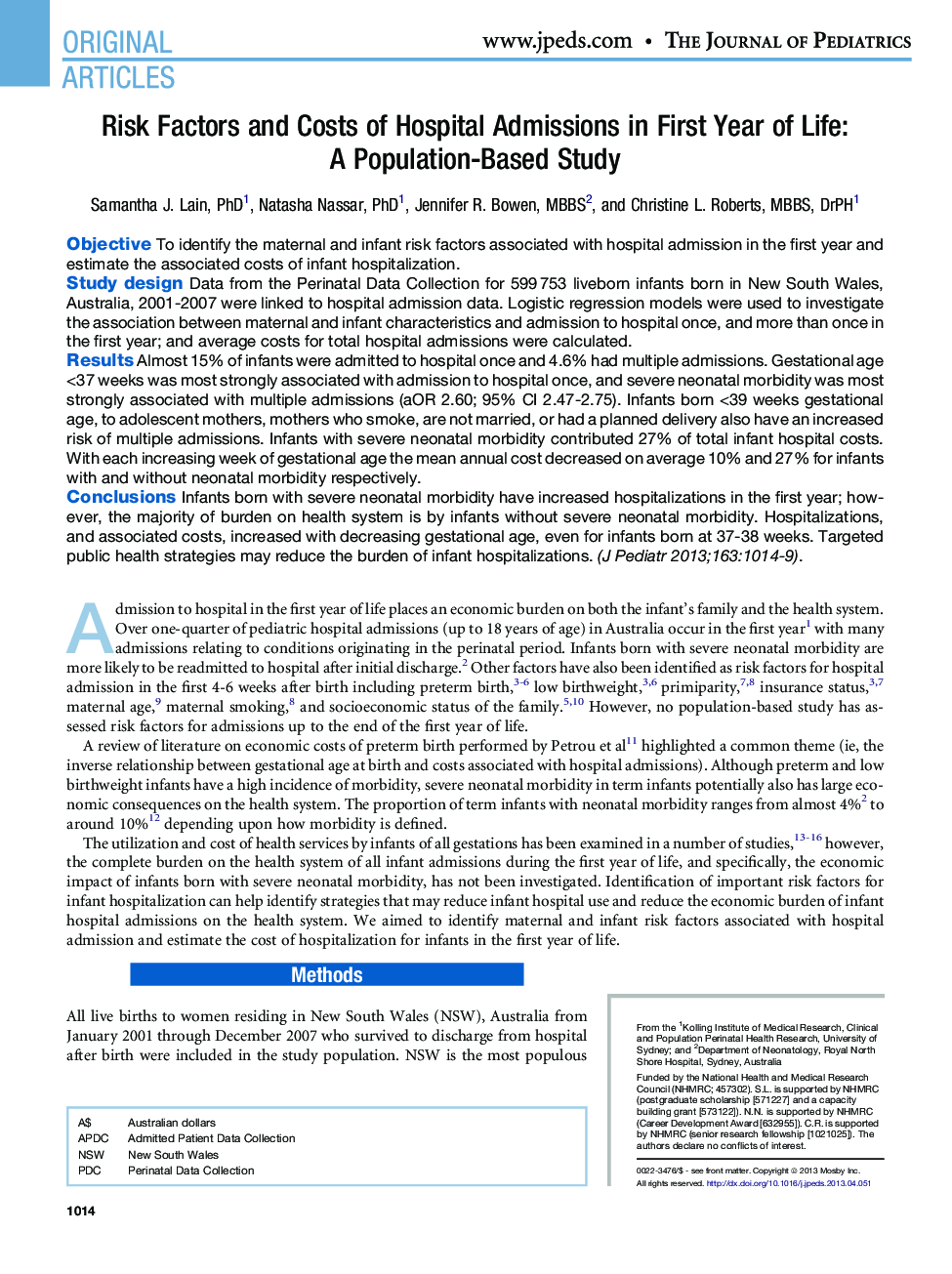| Article ID | Journal | Published Year | Pages | File Type |
|---|---|---|---|---|
| 4165210 | The Journal of Pediatrics | 2013 | 6 Pages |
ObjectiveTo identify the maternal and infant risk factors associated with hospital admission in the first year and estimate the associated costs of infant hospitalization.Study designData from the Perinatal Data Collection for 599 753 liveborn infants born in New South Wales, Australia, 2001-2007 were linked to hospital admission data. Logistic regression models were used to investigate the association between maternal and infant characteristics and admission to hospital once, and more than once in the first year; and average costs for total hospital admissions were calculated.ResultsAlmost 15% of infants were admitted to hospital once and 4.6% had multiple admissions. Gestational age <37 weeks was most strongly associated with admission to hospital once, and severe neonatal morbidity was most strongly associated with multiple admissions (aOR 2.60; 95% CI 2.47-2.75). Infants born <39 weeks gestational age, to adolescent mothers, mothers who smoke, are not married, or had a planned delivery also have an increased risk of multiple admissions. Infants with severe neonatal morbidity contributed 27% of total infant hospital costs. With each increasing week of gestational age the mean annual cost decreased on average 10% and 27% for infants with and without neonatal morbidity respectively.ConclusionsInfants born with severe neonatal morbidity have increased hospitalizations in the first year; however, the majority of burden on health system is by infants without severe neonatal morbidity. Hospitalizations, and associated costs, increased with decreasing gestational age, even for infants born at 37-38 weeks. Targeted public health strategies may reduce the burden of infant hospitalizations.
